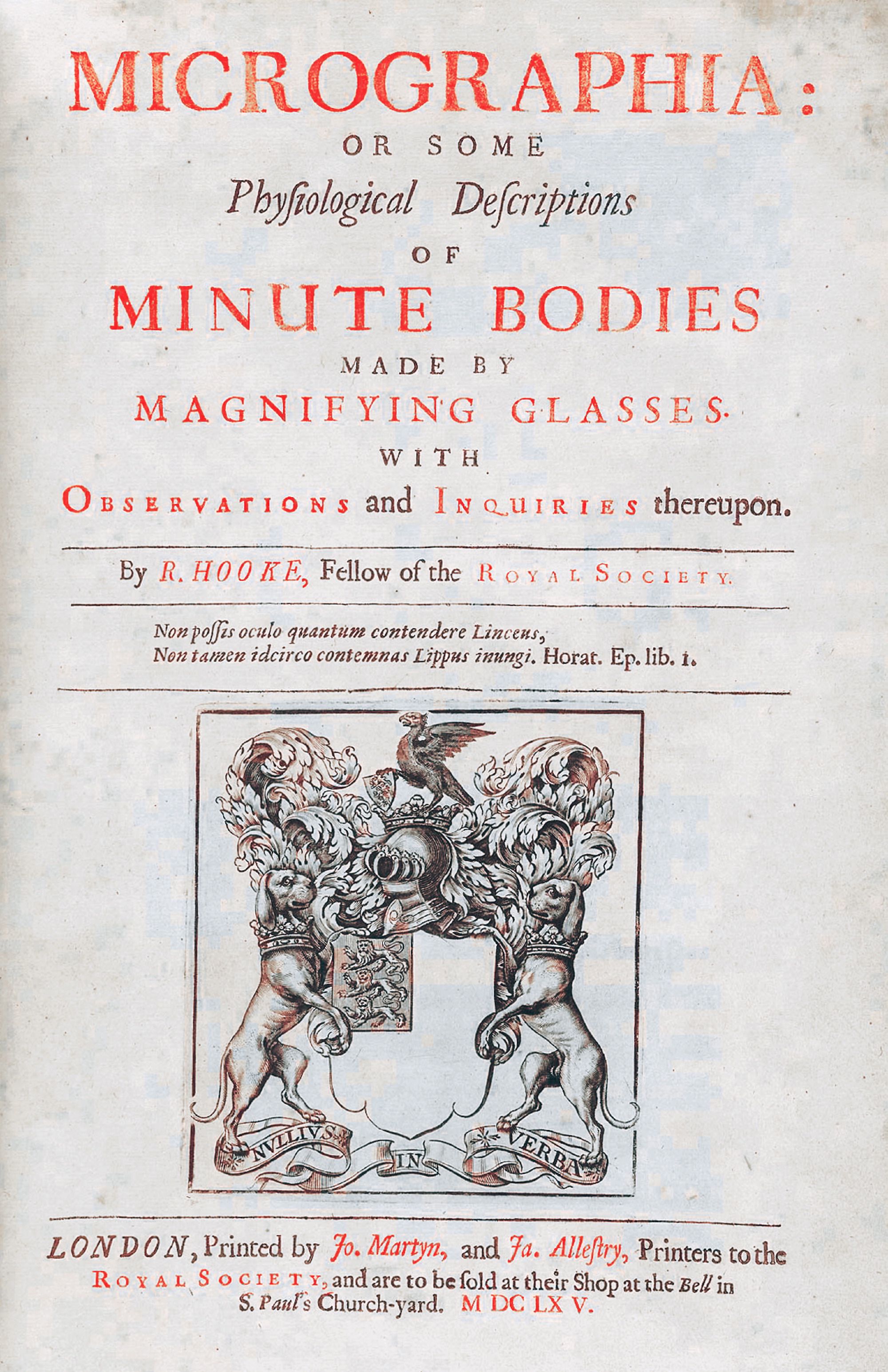Who Concluded That Animals Are Made Of Cells
Cell Theory
Jail cell Theory
Scientists once idea that life spontaneously arose from nonliving things. Thanks to experimentation and the invention of the microscope, it is now known that life comes from preexisting life and that cells come from preexisting cells.
Image
Micrographia Cover
English scientist Robert Hooke published Micrographia in 1665. In it, he illustrated the smallest complete parts of an organism, which he called cells.
Photo by Universal History Archive/Universal Images Group via Getty Images

In 1665, Robert Hooke published Micrographia, a volume filled with drawings and descriptions of the organisms he viewed under the recently invented microscope. The invention of the microscope led to the discovery of the jail cell past Hooke. While looking at cork, Hooke observed box-shaped structures, which he chosen "cells" as they reminded him of the cells, or rooms, in monasteries. This discovery led to the development of the classical cell theory. The classical jail cell theory was proposed by Theodor Schwann in 1839. There are three parts to this theory. The first part states that all organisms are made of cells. The second part states that cells are the bones units of life. These parts were based on a conclusion fabricated past Schwann and Matthias Schleiden in 1838, afterward comparing their observations of plant and creature cells. The tertiary office, which asserts that cells come up from preexisting cells that take multiplied, was described by Rudolf Virchow in 1858, when he stated omnis cellula due east cellula (all cells come from cells).Since the formation of classical cell theory, engineering science has improved, allowing for more than detailed observations that have led to new discoveries about cells. These findings led to the formation of the modern cell theory, which has three main additions: get-go, that Deoxyribonucleic acid is passed betwixt cells during cell sectionalization; second, that the cells of all organisms within a similar species are mostly the aforementioned, both structurally and chemically; and finally, that free energy flow occurs within cells.

English scientist Robert Hooke published Micrographia in 1665. In it, he illustrated the smallest consummate parts of an organism, which he called cells.
Photograph past Universal History Archive/Universal Images Group via Getty Images
classical cell theory
Noun
theory that all organisms are made of cells, which are the bones structural units of life.
Deoxyribonucleic acid
Noun
(dna) molecule in every living organism that contains specific genetic information on that organism.
microscope
Substantive
instrument used to view very small objects past making them appear larger.
modernistic jail cell theory
Noun
theory that cells are the basic structural, functional, and organizational units of both unmarried-celled and multicellular organisms; cells divide and pass on hereditary information; and free energy flows inside cells.
monastery
Noun
identify of residence and worship for a community of religious followers, usually called monks.
organism
Noun
living or one time-living thing.
Noun
grouping of similar organisms that can reproduce with each other.
Source: https://www.nationalgeographic.org/encyclopedia/cell-theory/#:~:text=The%20classical%20cell%20theory%20was,organisms%20are%20made%20of%20cells.
Posted by: buisuded1998.blogspot.com

0 Response to "Who Concluded That Animals Are Made Of Cells"
Post a Comment